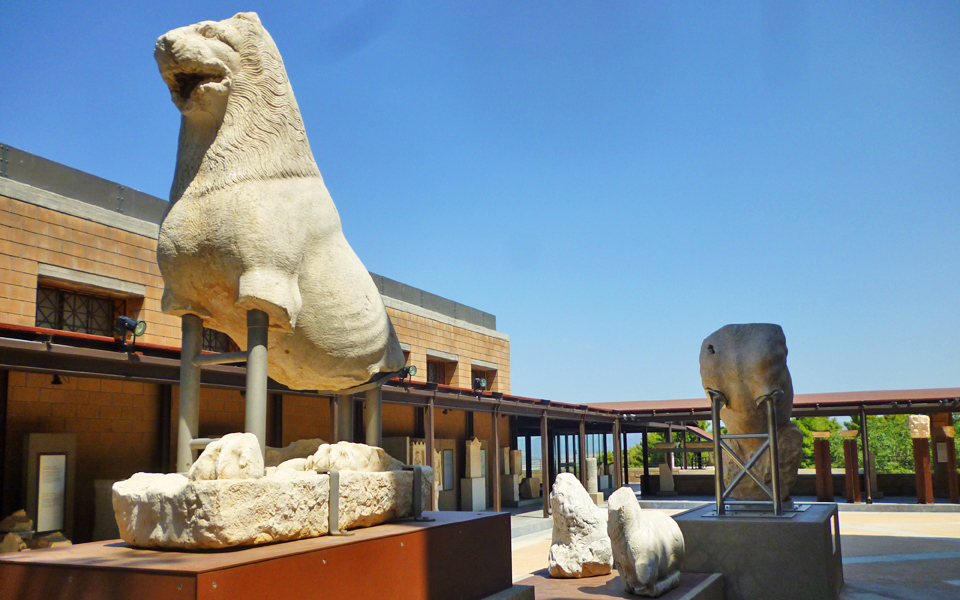The revamped Thebes Archaeological Museum, launched last July, promises to develop not just Thebes, but the entire Viotia (Boeotia) region into an attraction, says Alexandra Charami, the director of the Boeotia Ephorate of Antiquities.
Early figures have shown that tens of thousands of visitors have already made it to the museum, including eminent figures such as Jean-Luc Martinez, President-Director of the Louvre, and James C. Wright, the Director of The American School of Classical Studies in Athens.
In an interview, Charami talks about the next steps for the museum, including the international promotional campaign.
How important is the new museum for Thebes?
It’s fundamental, not just for the city but for all of Viotia. The majority of people skip visiting this spot while traveling along the highway, but, now, there is an important reason to make a slight detour to visit the museum. Until 2007, when revamp work began on the museum, its attendance figures hovered at very low levels, despite the significance of the artifacts on display. It generally drew few people with specialized interests, students from the prefecture’s schools and regional social clubs. Also, it has not featured in travel guides, something we hope to soon achieve, with help from the prefecture and the municipality. The first few months of the year have filled us with strength and optimism. Over 10,000 people, a record figure for the museum, visited from June 7, when it opened, to the end of that month, when no entrance fee was charged. From July to the end of August, when a six-euro entrance fee was introduced, a further 6,000 visitors were added to the total, 60 percent from abroad and 40 percent local.
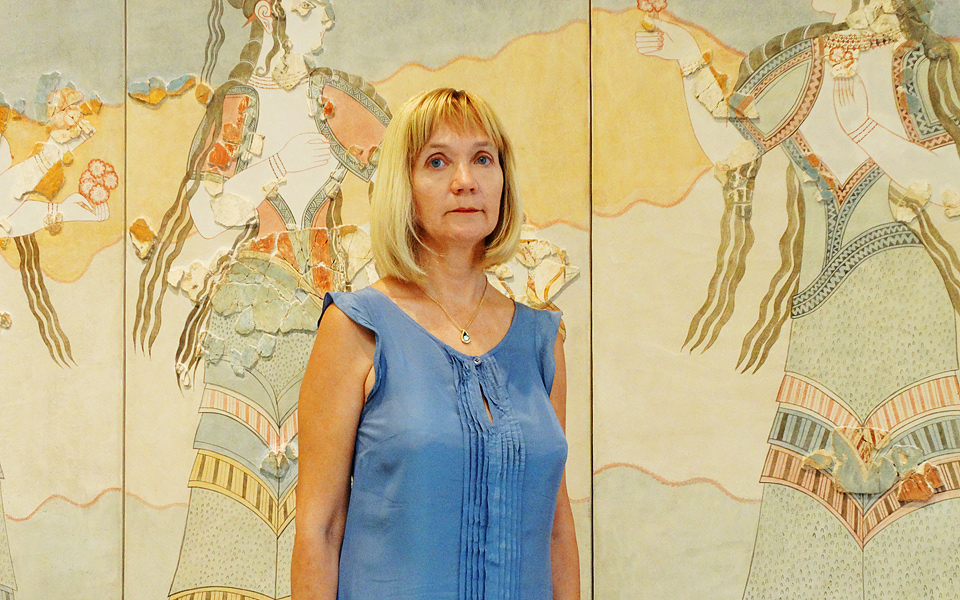
What have you set as your next objective?
The aim is for visitors of all ages and countries to visit the museum. A coordinated effort is being made by municipal and regional authorities for the museum to become well known to Greeks and foreigners. We at the Boeotia Ephorate of Antiquities are making an effort to contribute to the museum’s international projection through guided tours, press publicity, as well as lectures, both in Greece and abroad.
Jean-Luc Martinez, the Louvre director, has already responded to the initiative. He spoke very positively and was impressed by the facilities and exhibits after being taken on a guided tour. I have now been invited by him to Paris, to deliver a speech at the Louvre amphitheater. Also, other speeches and conferences are being planned to take place at the Thebes Archaeological Museum.
The museum is fully accessible to persons with disabilities, while programs for visually impaired persons will soon be made available.
We are well aware of the fact that a museum is never completed. It is, rather, a living entity that continues to evolve. Since the museum’s opening, ideas have been exchanged with visitors about possible insufficiencies or requirements deemed necessary by the public. The objective is to keep improving the museum.
How has the museum’s exhibition space been laid out and which exhibits have you set apart?
The display, which takes up 1,000 square meters indoors, an additional 1,390 square meters of semi-open exhibition space, as well as 1,750 square meters of outdoor space, begins at the entryway and garden. It has been shaped over two levels, around a luminous central interior space, and is divided into 18 entities, covering the Paleolithic period through to the establishment of the Modern Greek State.
An archaeological site discovered during groundwork for the building’s extension makes up part of the exhibition. Tombstones, sculptures and inscriptions on structural fragments are displayed in the sheltered outdoor space. The items here include a headstone repatriated from the J. Paul Getty Museum. Funerary lions are on display beyond the sheltered area and the medieval Saint Omer Tower stands imposingly at the centre of the outdoor area as a museum landmark. It has been enhanced and is now open to the public for the first time.
Of the roughly 2,700 artifacts on display, the most significant pieces are the Linear B tablets, cylinder seals, lazurite jewelry from Mesopotamia and Afghanistan, gold and ivory objets d’art, the frescoes depicting the procession of women from the Palace of Thebes, as well as those from the Orchomenos and Gla palaces, the painted funerary urns from Tanagra and much more.
INFO
Thiva (Prefecture of Viotia), 32200
Tel. (+30) 2262.027.913
Open daily except for Mondays: Winter: 08:00 – 15:00, Admission: €3 • Summer: 08:00 – 20:00, Admission: €6
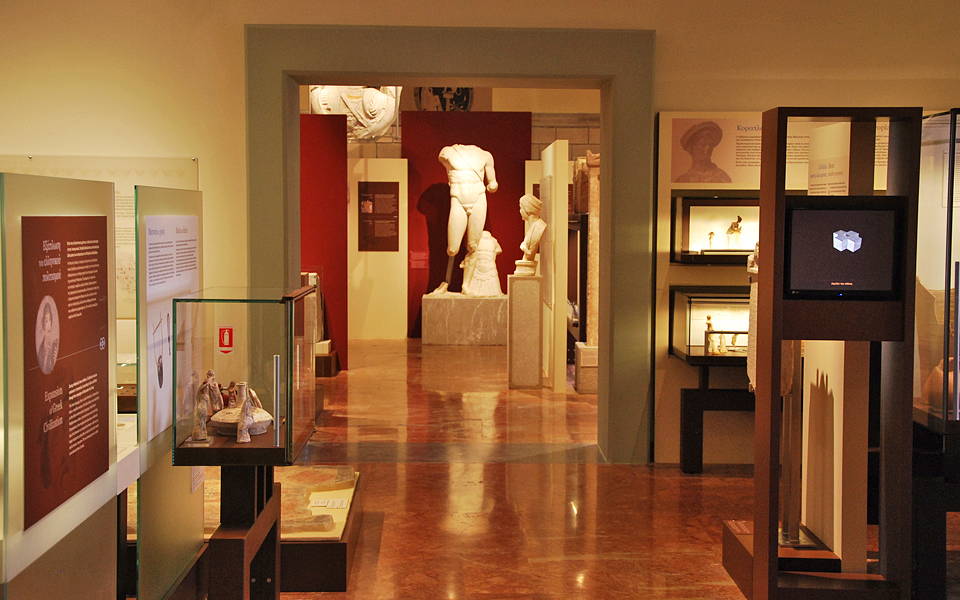
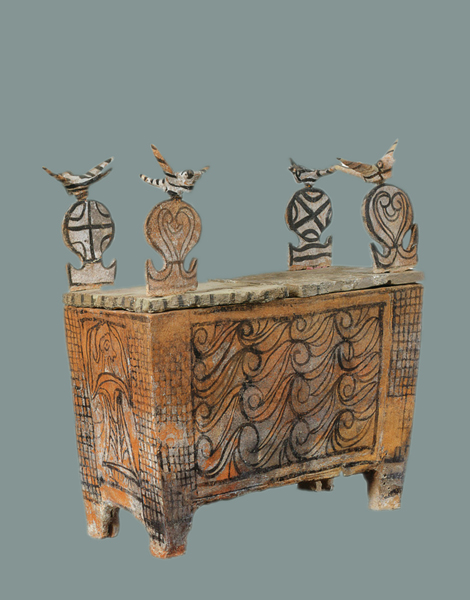
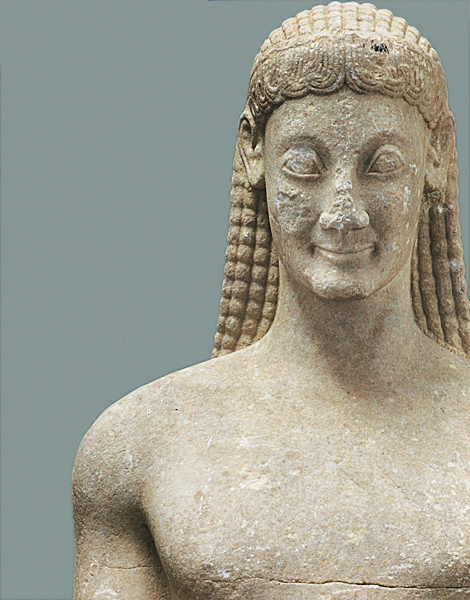
Will you seek to capture the attention of people who visit neighboring Delphi?
We can’t compete against Delphi. This is not our objective. However, the objective is to increase the number of people who visit the museum. We would like it to stand as a cultural attraction for the city of Thebes and the wider Viotia area by convincing visitors heading for Delphi to stop over. Even Athenians and visitors from abroad, who are in the Greek capital for tourism, can become acquainted with the museum and the gems of the wider region. Thebes is just one-and-a-half hours from Athens.
Excavation work is currently being conducted in Thebes. Could the city develop into an archaeological destination over the next few years?
Significant excavation program collaborations are now taking place in Thebes at the Mycenaean palace of Cadmus, the Temple of Apollo Ismenios and the Hercules Sanctuary, producing finds that are being exhibited for the very first time at our museum. Besides the emergence of new significant academic details on the Cadmea acropolis, important segments of the city’s Byzantine-era settlement have also been discovered.
The Ephorate’s objective is to develop an archaeological trail covering the city’s network (of ruins), with the new museum as its nucleus. We have already begun shaping the plans for this project, highlighting sites. Following approval, we will seek to gradually actualize the plan, so that Thebes may become an attractive archaeological destination.
As for the rest of the Viotia prefecture, the Mycenaean acropolis, Eleonas in the Arma region and the Onchestus Temple of Poseidon in the Aliartos-Thespies area are being excavated. The future objective is to establish Thebes as a center of Viotian archaeological studies in conjunction with the foreign schools and their excavation work being conducted under the auspices of the Archaeological Society at Athens. Student groups, both Greek and foreign, are already arriving to take part in these excavations.
Which other monuments or sites can a visit to the Thebes Archaeological Museum be combined with?
Visitors are provided with the opportunity to learn about various monuments in the Viotia area such as the Hosios Loukas monastery, one of the best-preserved monastery structures of the post-Byzantine era in Greece, ancient Orchomenos, Cadmea and the Mycenean palace of Thebes. The Kabeirian Temple of Thebes, a significant ancient Boeotian monument, is located close to the city, while the archaeological museums at Schimatari and Heronia, as well as the archaeological collections at Distomo and Thespies are all particularly interesting. All these and more will gradually be incorporated into the mainland’s cultural routes being planned in association with the Ministry of Culture and the relevant Antiquities Ephorates.

